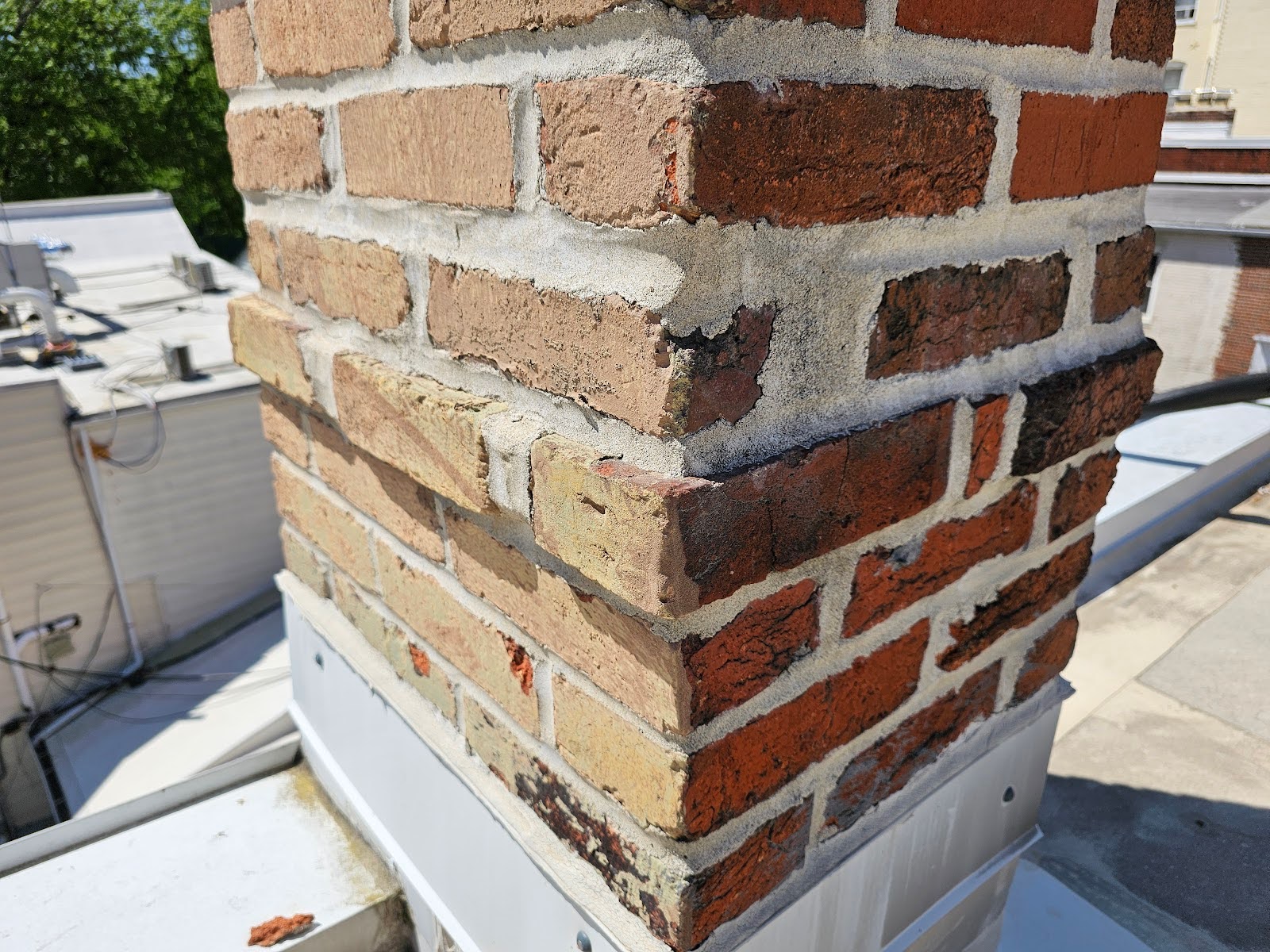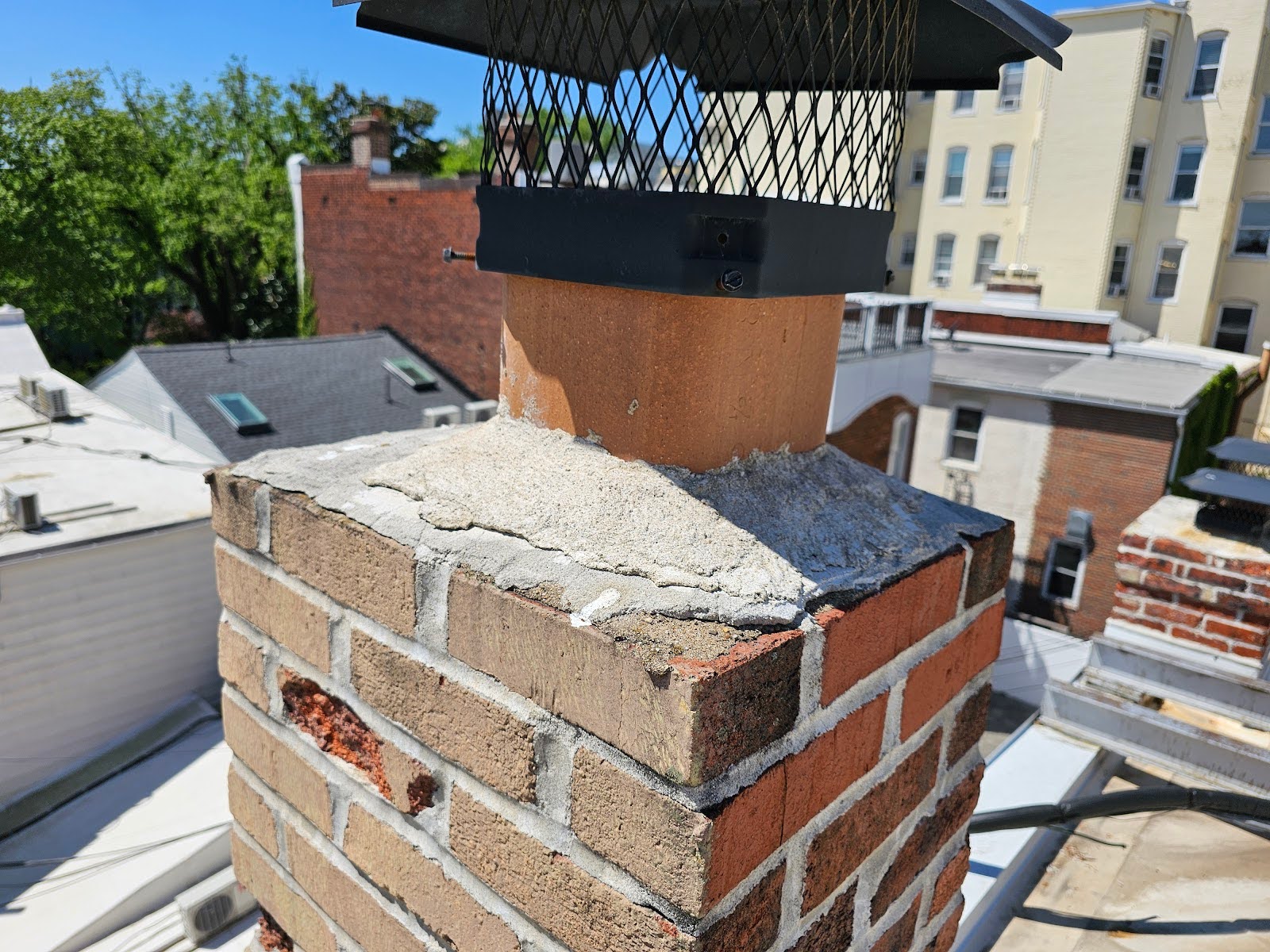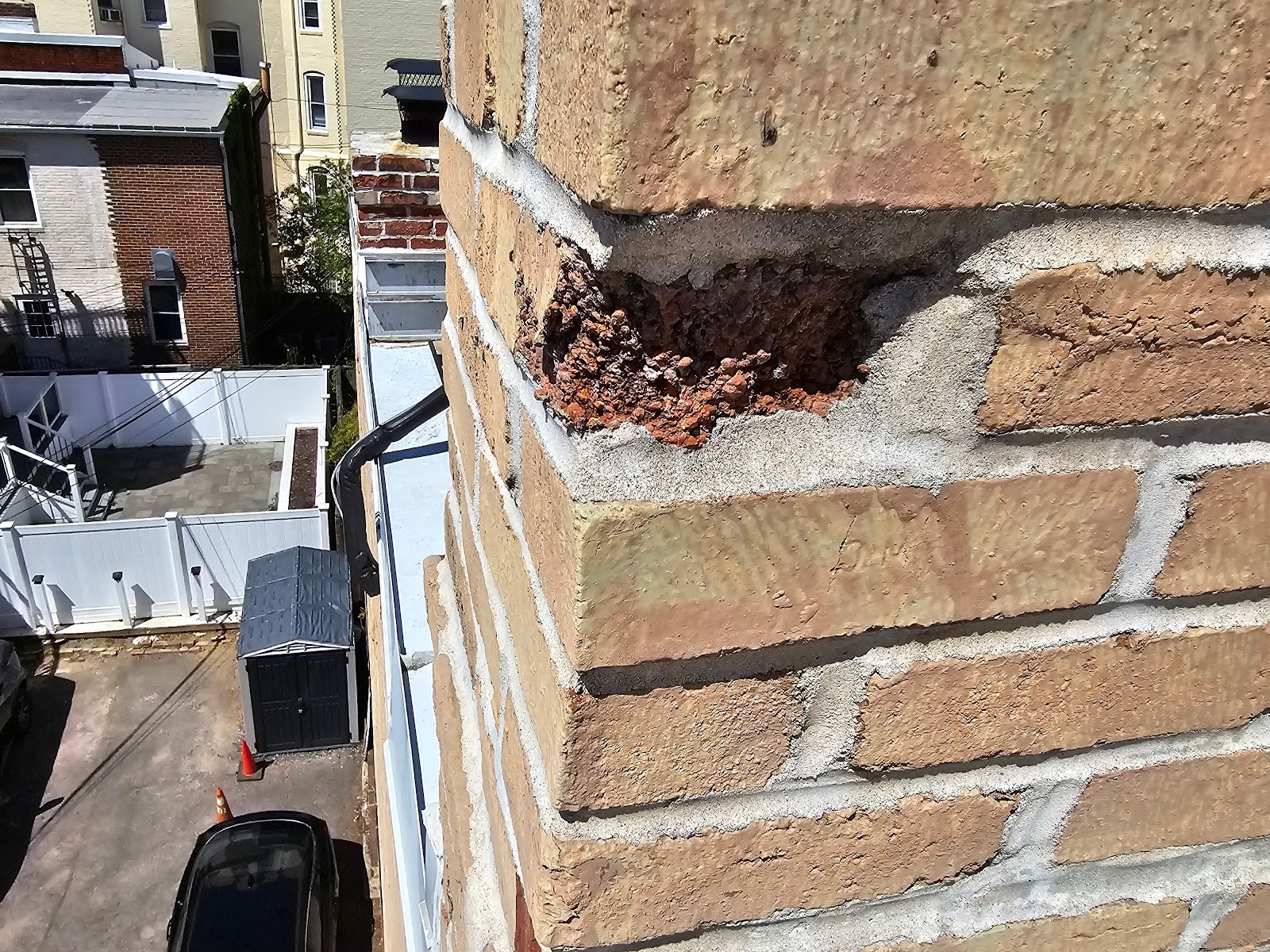Key Insights on Brick Chimneys Above the Roofline
This past week, we took a look at different photos of the same chimney shown in the next picture below. We talked about the counter flashing at the base of the chimney and how that counter flashing is generally intended to be set into a reglet or a ragle at the brick mortar or between the bricks into the motor joint. We also talked about how this particular brickwork has been painted at one facing but not painted at the other side which makes sense if the facade of the brick is painted, the chimney, although in a sort of separate area, is a continuation of that exterior facade of the building.

Today, we’re also going to look at the crown and capping of that chimney. These parts of the chimney are important because even though they’re not typical elements that we find in historic masonry restoration, here they’re important because they keep water out of the brickwork. The crown works like a typical coping but is generally made from cement. Typically masonry hasva coping installed at the top of masonry parapet.
For example, the coping may be made with aluminum sheet metal. In most cases that aluminum sheet metal is bent across the horizontal top of the parapet wall and then slightly down the sides on both of the interior and exterior sides of the parapet wall. That coping, like a crown or typical capping, allows water to flow off to the sides of the facade without entering the masonry at the top of the building.
Masonry is generally considered to be semi permeable. That means that masonry, to a large extent, can resist moisture, but it isn’t exactly impermeable. The difference is subtle but important because water can actually enter into a masonry facade. At ledges, and at the top of a wall, where these elements are near horizontal, if left uncapped, water can permeate into the semi-porous masonry. Both the brick itself and mortar have a degree of permeability.
Generally we’re not worried about these details much at ledges or sills. Particularly, at windowsills and or at any intentional ledges, it’s best practice to build those details at a minimum slope of roughly 1/4 of an inch per foot or more.
That intentional slope allows water to roll off of the otherwise near horizontal areas that would be susceptible to slow permeation. At rooftop parapets though, it’s better to install a coping because the parapet walls are generally linear, in geometric nature, and relatively easier to cover a large area without significant bending. Bending still has to happen at corners and or anomalies, but the ratio of bent areas to linear non-bent areas is relatively low. Therefore, it’s pragmatic and makes sense to install a sheet metal coping.
That same analysis or context doesn’t apply well though to chimney tops. At the perimeter of a chimney, it’s better to install a masonry crown. In this particular case is more pragmatic to install a crown because the slope must be configured around a chimney flue to four sides of a chimney, in most cases. The next picture below shows an example of a chimney crown at the top, a terracotta flue which penetrates through the top of the chimney on top of the chimney brickwork and the top of the chimney brickwork below that. Here you can see all these elements put together in the typical sequence and assembly.

You’ll notice though, when you look closely at the bottom right corner of that chimney crown, there is both cracking and delamination of the cementitious crown that has been applied on top of the brickwork.

Another one of the principal areas of the deterioration is shown in the next picture below. This particular brick has spalled. Spalling is delamination or separation of the face of a brick. It’s a relatively common occurrence that happens for a variety of different causes or factors.
One of those primary causal factors appears to be present in this case where the company or people who repointed this chimney last may have used the wrong mortar. If incorrect mortar is used, it can cause the face of a brick to break right off from the remainder of the brick below. This type of problem is significant because it will lead to accelerated deterioration and failure of the wall or in this case chimney.

Another picture of a spalled brick follows in the next picture below but particular details of this example indicate that this spalling may have occurred prior to repointing because it looks like the mortar joint has been feathered out deeper into the area of the brick facing to cover some of the omission or recess area where the brick spalled away.

In this coming next week’s blog, we’re going to look at three different photos of other chimney tops where different types of capping or crowns have been applied to cover the tops of the chimneys.
Our company, Dupont Tuckpointing and Masonry, specializes in masonry restoration, historic brick repointing, and tuckpointing services in the Washington D.C. area. These buildings are uniquely historic, and their preservation requires skilled masons who are technically trained in the best practices and knowledge of proper restoration techniques.
We understand the significance of maintaining the architectural integrity of these historic structures, and our team of experienced professionals is dedicated to delivering exceptional craftsmanship. Whether you require masonry restoration, tuckpointing, or brick repointing services, we are here to help.
At Dupont Tuckpointing and Masonry, we take pride in our work and strive to ensure that every project is executed with the utmost care and attention to detail. We are committed to preserving the rich heritage of Washington D.C.’s built environment for generations to come.
If you have any questions or needs regarding masonry restoration, historic brick repointing, or tuckpointing services, please do not hesitate to reach out to us. We would be delighted to assist you and provide you with the expertise and quality workmanship that your historic property deserves.
You can reach us by telephone at (202) 796-7644 and you can reach us by email from the contact form on our website at https://duponttuckpointingmasonrydc.com/contact-us/.




